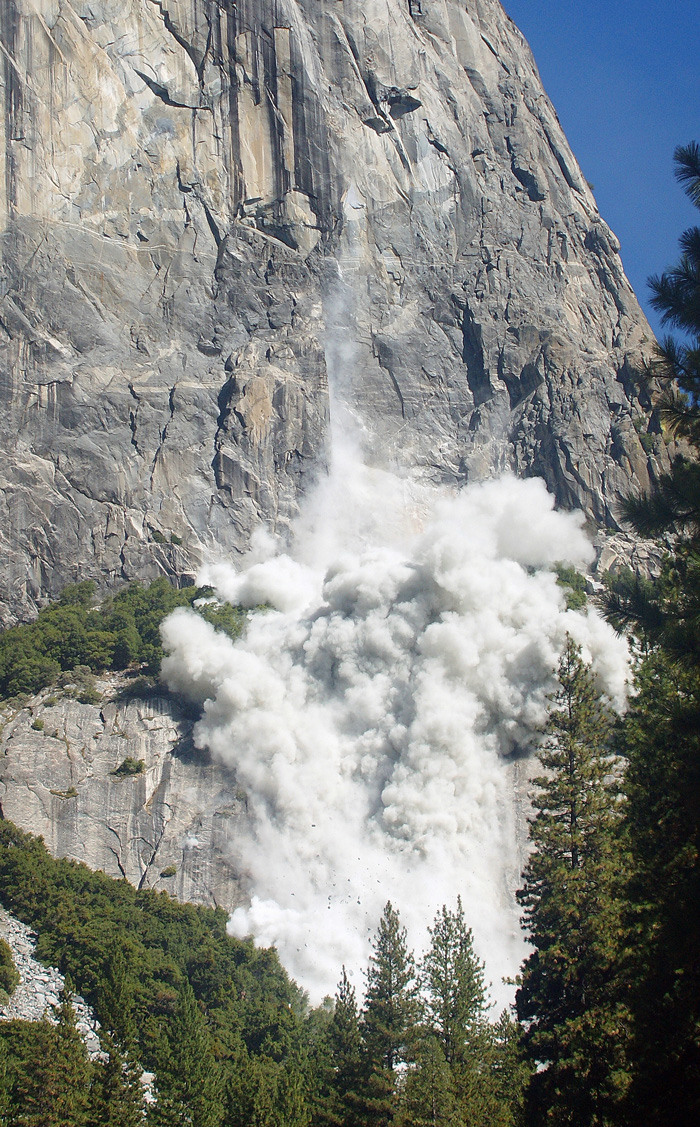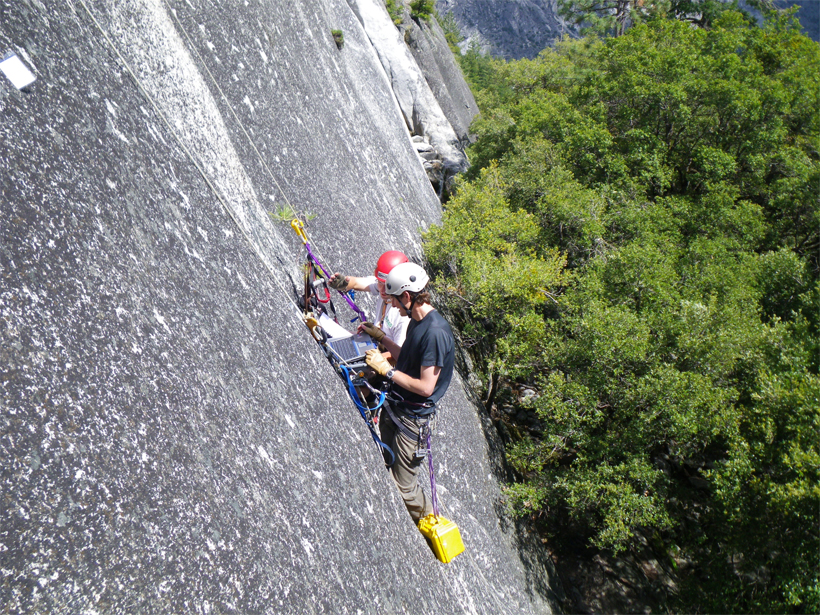Geologists have long known that earthquakes, along with precipitation and freeze-thaw cycles, can trigger giant slabs of rock to fall from mountain faces, to thunderous effect. Now a research team, following a clue from rock climbers at Yosemite National Park, has shed some light on why rockfalls will sometimes happen in the middle of a clear, sunny day without an obvious cause.
The reason: Daily, seasonal, and annual temperature fluctuations can cause the granite slabs to slowly peel away, or exfoliate, then suddenly fracture and fall, the scientists reported last week in Nature Geoscience.
“There’s this hypothesis that thermal stresses could cause rocks to fracture and break and fall. That isn’t anything new—people have been thinking about that for over a hundred years. But it hadn’t been measured,” said Brian Collins, a research civil engineer with the U.S. Geological Survey in Menlo Park, Calif., and a coauthor of the paper.
Climbers Point the Way
He and coauthor Greg Stock, who is Yosemite’s first-ever park geologist, had heard stories from Yosemite’s many rock climbers about their climbing gear getting stuck in the cracks of detached granite slabs—or “flakes” as Collins and Stock say—as hot days wore on into cool nights. This gave the duo the idea to climb to a flake and install “crackmeters”—instruments the researchers devised themselves that measure minute changes in crack width over time.
“This isn’t just [one person who] put the gear in wrong and couldn’t get it back out; lots of people are going through this,” Collins said. “We thought, maybe it’s that the rock flakes are moving back into the cliff, and if that’s the case, maybe it’s measurable.”
“That was a big huge ‘Wow!’—we had no idea it was going to move that much.”
They specifically put the crackmeters in a gap behind a granite flake about 19 meters long, 4 meters wide, and about 15 meters above the park’s valley floor. After 1 month, the crackmeter data indicated the flake, from night to day, was moving “in and out of the wall by up to a centimeter each day,” said Collins. “That was a big huge ‘Wow!’—we had no idea it was going to move that much.”
Thermal Weathering
Ultimately, Collins and Stock monitored the crack for 3.5 years. Over that time, they found that crack widths vary seasonally, with the hot summer months producing the widest offsets. They also found that the rock’s outward expansion was cumulative: the flake would move forward more and more each year, building on the previous season’s progress.

Millions of people visit Yosemite every year, so the park’s staff has kept thorough records of rockfalls there. These records indicate that spontaneous rockfalls—the kind that happen for no obvious reason—occur most often during the hot summer months. “We discovered that these flakes actually deform quite a bit, much more than we had originally thought, and we’ve been able to link that to how the process of thermal heating can move a flake in and out,” Collins said. Such movement will “eventually lead to fracture,” he added.
Still, because fracture propagation is nonlinear, it is not possible to predict how far off in the future a flake might pass its threshold and detach, Collins explained.
“These results are scientifically wonderful, and they have implications for landscape evolution and rockfall hazards in other high mountain areas.”
“These results are scientifically wonderful, and they have implications for landscape evolution and rockfall hazards in other high mountain areas,” commented landslide expert David Petley of the University of East Anglia in the United Kingdom in a 30 March blog post about the new study.
“Whilst higher than expected levels of rockfalls have been observed in the summer months in many mountain landscapes, in general I think it has been assumed that this is mostly associated with the melting of ice in cracks. Whilst this ice driven process is undoubtedly still important, Collins and Stock (2016) has given us cause to think about other processes too,” added Petley, whose editorially independent The Landslide Blog is hosted by the American Geophysical Union, publisher of Eos.org.
In future work, Collins explains, it may be possible to determine “how many [thermal] cycles it takes to eventually fracture the rock,” which might help Yosemite’s staff identify slabs that may be close to collapsing and thus endangering park visitors.
—Lucas Joel, Freelance Writer; email: [email protected]
Citation: Joel, L. (2016), A warm day can trigger rockfalls, Eos, 97, doi:10.1029/2016EO049593. Published on 5 April 2016.
Text © 2016. The authors. CC BY-NC-ND 3.0
Except where otherwise noted, images are subject to copyright. Any reuse without express permission from the copyright owner is prohibited.

